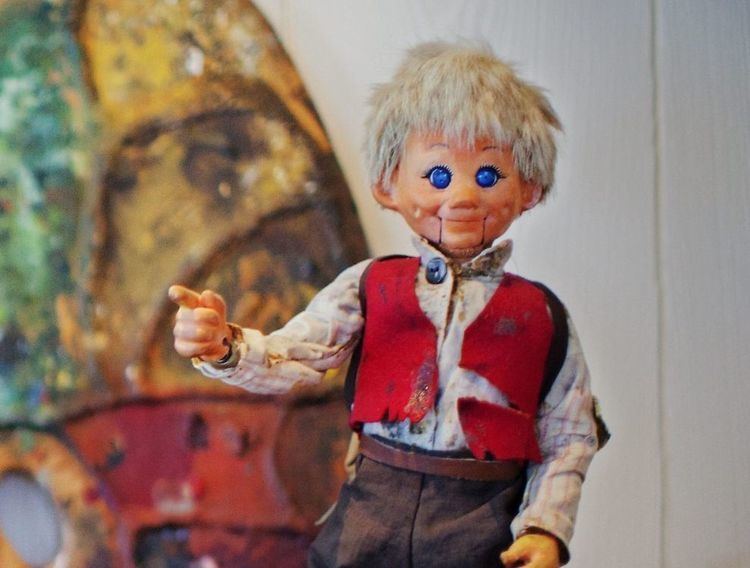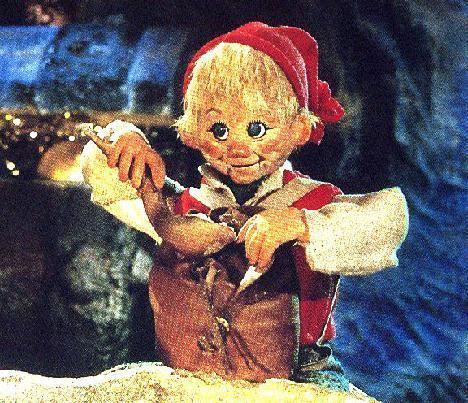 | ||
Similar Solan Gundersen, Ludvig, Reodor Felgen | ||
Askeladden (Norwegian "Ash Lad") is the main character in many Norwegian folktales. In some ways, he represents the small man who succeeds where all others fail. He always wins in the end, often winning the princess and half the kingdom. The origin of this character was compared by scholars to the one of the old Norse god Loki as a fire Vættir. In some retellings, Askeladden is renamed Boots.
Contents

Folk tales

In many folk tales, the Ash Lad is portrayed as the youngest of three brothers. Early in a typical tale, the older brothers appear to have much greater chances of success in life. For example, one brother might be extremely well read, whereas another might be extremely competent in another area. In contrast, the Ash Lad is looked down upon as a seemingly drowsy ne'er do well, perhaps even as a loner or misunderstood eccentric, who spends too much time sitting by the fireplace lost in thought as he is poking the ashes.

As the typical story unfolds, the oldest brothers try first to heroically overcome some major crisis or problem. As an example, one tale involves rescuing a princess held captive in a land East of the Sun and West of the Moon. The two older brothers, who are tied to conventional thinking, typically fall flat on their faces. In contrast, it is the Ash Lad who comes up with creative solutions. He is smarter, more tactical, more receptive and more aware of the needs of others. He outwits trolls, dodges charging unicorns or gets a magic Viking ship to transport him where he ultimately saves the princess.

The "heroic" trait of the character is probably most prominent in the stories told by Peter Christen Asbjørnsen and Jørgen Moe. The tales they collected present the "classical" Ash Lad. In other stories, collected by others, the character and his brothers are presented as mere scoundrels, even thieves. Those stories present the youngest brother as the one with the wits about him, and thus, he gets away with the loot. They always steal from the wealthy farmers or even the king. Those stories are documented from Vest-Agder, in their time the poorest parts of Norway, where suppression was common. Thus, the Ash Lad has some similarities with the Norwegian crime writer Gjest Baardsen (1791–1849).
In modern parlance, the Ash Lad is an individualist, free-thinker, and nonconformist who is capable of deep abstract, analytical thinking "outside the box", or who can create a scientific paradigm shift. He is capable of acting as a true visionary or innovative early adopter. In contrast, the older brothers are more conformist and conventional.
Name
The name Askeladden is constructed. It is not present in any recorded source. His original name is in fact Oskefisen or Askefis, the one who sits and is blowing in the ashes. This would make sense, as the job of blowing on the embers was often assigned to the person of the household who was considered the least fit for other, more demanding chores – typically a fragile grandmother or a small child. In this way, the Ash Lad's presumed ineptness is underlined at the beginning of the tale. One can also imagine that the chore of keeping the fire up is somewhat important, as a fireplace is the actual heart of the house. In Asbjørnsens's first edition (1843), the name is rendered as Askepott, which in Norway is commonly associated with Cinderella. This was later turned into Askeladden by Moltke Moe.
The character is also closely related to the common and quite nationalistic jokes of the three Scandinavian archetypes, the Norwegian, the Swede and the Dane. In those jokes, the Norwegian always succeeds in petty contests where the others do not. The jokes resemble the fairy-tale pattern and are mostly told by Norwegian children. Here, one can interpret the Norwegian as the youngest and underdog brother of the three, a parallel to the historical facts of Norway's position in Scandinavia.
Adventures of Askeladden
Askeladden is the protagonist in numerous folk tales:
